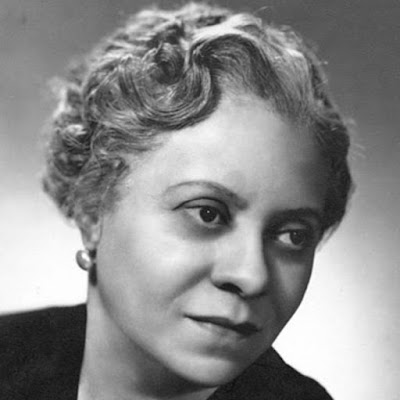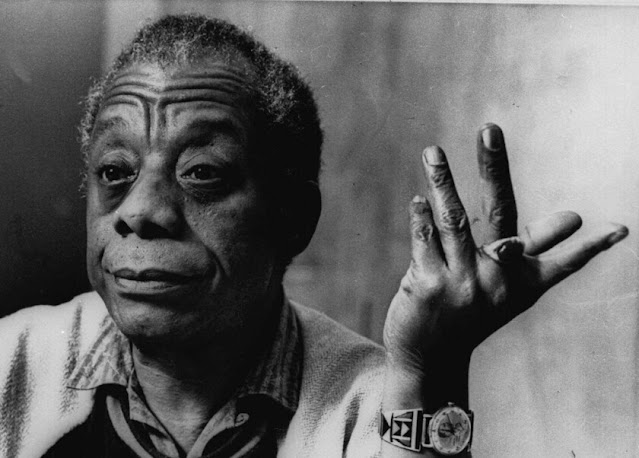Women's Herstory Month Series: Florence B. Price
 |
| Florence B. Price |
¹ Florence Beatrice Price (April 9, 1887 – June 3, 1953) was an American classical composer. She was the first African-American woman to be recognized as a symphonic composer, and the first to have a composition played by a major orchestra.
Florence Beatrice Price was born to Florence Gulliver and James H. Smith on April 9, 1887, in Little Rock, Arkansas, one of three children in a mixed-race family. Despite racial issues of the era, her family was well respected and did well within their community. Her father was a dentist and her mother was a music teacher who guided Florence's early musical training. She had her first piano performance at the age of four and went on to have her first composition published at the age of 11.
By the time she was 14, Florence had graduated from Capitol High School at the top of her class and was enrolled in the New England Conservatory of Music with a major in piano and organ. Initially, she pretended to be Mexican to avoid the prejudice people had toward African Americans at the time. At the Conservatory, she was able to study composition and counterpoint with composers George Chadwick and Frederick Converse Also while there, she wrote her first string trio and symphony. She graduated in 1906 with honors and both an artist diploma in organ and a teaching certificate.
 |
| A young Florence Price |
She taught in Arkansas briefly before moving to Atlanta, Georgia, in 1910, where she became the head of Clark Atlanta University's music department. In 1912, she married Thomas J. Price, a lawyer, and moved back to Little Rock, Arkansas. After a series of racial incidents in Little Rock, particularly a lynching in 1927, the family moved to Chicago, where Florence Price began a new and fulfilling period in her compositional career. She studied composition, orchestration, and organ with the leading teachers in the city including Arthur Olaf Andersen, Carl Busch, Wesley La Violette, and Leo Sowerby, and published four pieces for piano in 1928. While in Chicago, Price was at various times enrolled at the Chicago Musical College, Chicago Teacher’s College, University of Chicago, and American Conservatory of Music, studying languages and liberal arts subjects as well as music.
 |
| Margaret Bonds |
Financial struggles led to a divorce in 1931, and Florence became a single mother to her two daughters. To make ends meet, she worked as an organist for silent film screenings and composed songs for radio ads under a pen name. During this time, Price lived with friends and eventually moved in with her student and friend, Margaret Bonds, also a black pianist and composer. This friendship connected Price with writer Langston Hughes and contralto Marian Anderson, both prominent figures in the art world who aided in Price's future success as a composer. Together, Price and Bonds began to achieve national recognition for their compositions and performances. In 1932, both Price and Bonds submitted compositions for Wanamaker Foundation Awards. Price won first prize with her Symphony in E minor, and third for her Piano Sonata, earning her a $500 prize. Bonds came in first place in the song category, with a song entitled "Sea Ghost." The Chicago Symphony Orchestra, conducted by Frederick Stock, premiered the Symphony on June 15, 1933, making Price’s piece the first composition by an African-American woman to be played by a major orchestra.
 |
| Langston Hughes |
A number of Price's other orchestral works were played by the WPA Symphony Orchestra of Detroit and the Chicago Women’s Symphony. Price wrote other extended works for orchestra, chamber works, art songs, works for violin, organ anthems, piano pieces, spiritual arrangements, four symphonies, three piano concertos, and a violin concerto. Some of her more popular works are: "Three Little Negro Dances," "Songs to a Dark Virgin," "My Soul's Been Anchored in de Lord" for piano or orchestra and voice, and "Moon Bridge." Price made considerable use of characteristic black melodies and rhythms in many of her works. Her Concert Overture on Negro Spirituals, Symphony in E minor, and Negro Folksongs in Counterpoint for string quartet, all serve as excellent examples of her idiomatic work.
 |
| Marian Anderson |
On June 3, 1953, Price died from a stroke in Chicago, Illinois. Following her death, much of her work was overshadowed as new musical styles emerged that fit the changing tastes of modern society. Some of her work was lost, but as more African-American and female composers have gained attention for their works, so has Price. In 2001, the Women's Philharmonic created an album of some of her work. Pianist Karen Walwyn and The New Black Repertory Ensemble performed Price's "Concerto in One Movement" and "Symphony in E minor" in December 2011.
In 2009, a substantial collection of her works and papers were found in an abandoned dilapidated house on the outskirts of St. Anne, Illinois. These consisted of dozens of her scores, including her two violin concertos and her fourth symphony. As Alex Ross stated in The New Yorker in February 2018, "not only did Price fail to enter the canon; a large quantity of her music came perilously close to obliteration. That run-down house in St. Anne is a potent symbol of how a country can forget its cultural history."
Even though her training was steeped in European tradition, Price's music consists of mostly the American idiom and reveals her Southern roots. She wrote with a vernacular style, using sounds and ideas that fit the reality of urban society. Being deeply religious, she frequently used the music of the African-American church as material for her arrangements. At the urging of her mentor George Whitefield Chadwick, Price began to incorporate elements of African-American spirituals, emphasizing the rhythm and syncopation of the spirituals rather than just using the text. Her melodies were blues-inspired and mixed with more traditional, European Romantic techniques. The weaving of tradition and modernism reflected the way life was for African Americans in large cities at the time.
Watch the opening of the documentary The Caged Bird: The Life and Music of Florence B. Price:
¹ From Wikipedia.










Comments
Post a Comment